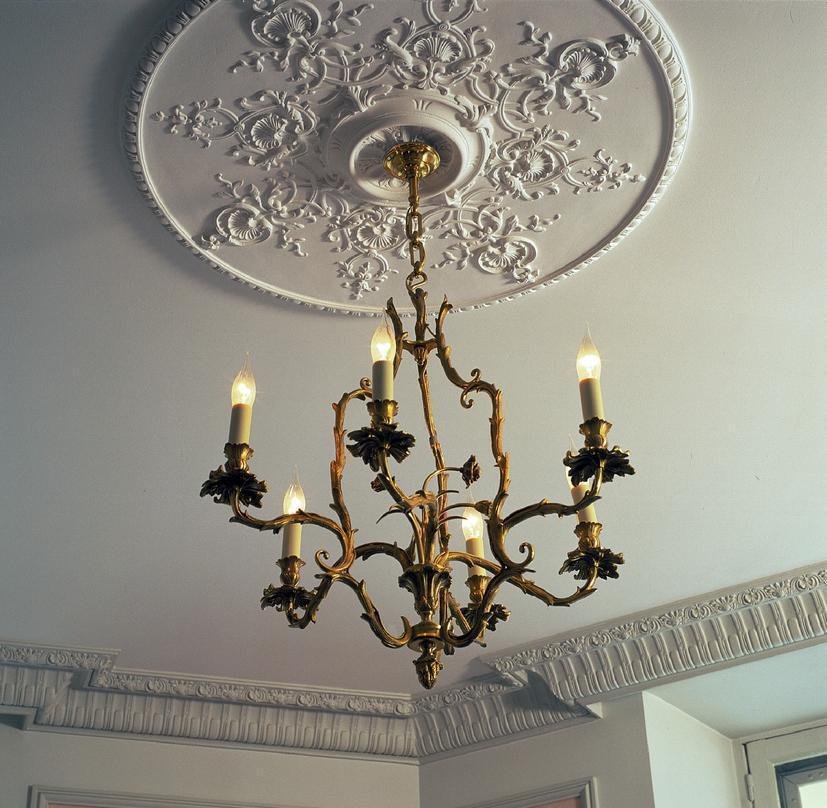Fibrous plaster moldings and Plaster Ceiling Roses in London are traditional architectural elements that give interior spaces a sense of refinement and elegance. Although ceiling roses have historically been connected to older homes, they are becoming more and more popular in newer construction as fashionable accents that may improve any space.
For these elaborate designs, as well as other decorative moldings and cornices, fibrous plaster is the preferred material due to its versatility. This article will discuss the uses, styles, and advantages of fibrous plaster and plaster ceiling roses, as well as how they can improve the visual attractiveness of your house.
Plaster Ceiling Roses: What Are They?
Decorative circular moldings called plaster ceiling roses are usually put on ceilings around the base of light fixtures, especially chandeliers. Typically seen in homes from the Victorian, Edwardian, and Georgian eras, these ornamental pieces were first intended to hide the stains produced by gas lighting. These days, ceiling roses serve just as ornamental accents, drawing attention to the ceiling and giving every space a charming, unique feel.
Because ceiling roses come in so many different shapes, sizes, and styles, homeowners can choose one that matches their interior decor and home’s architectural style. Ceiling roses can be tailored to improve any space, from plain, subtle patterns to complex ones with floral motifs, acanthus leaves, or classical scrollwork.
Fibrous Plaster: What Is It?
To generate robust, lightweight, and detailed ornamental features, fibrous plaster is a type of plaster that combines layers of hessian cloth, also known as burlap and is frequently reinforced with a gypsum-based mixture. Fibrous plaster is usually made in workshops, where it is cast into different shapes before being transported and installed at the construction site. This is in contrast to traditional plaster, which is applied wet and molded on-site.
Because of the material’s great versatility, ceiling roses, cornices, architraves, and other architectural features can be made with intricate designs and precise finishes. Fibrous plaster is less labor-intensive than regular plaster since it is pre-cast, yet it still has the same strength and visual appeal. Since the 19th century, fibrous plaster has been utilized in architecture, and because of its durability and versatility, it is still a common material for ornamental work in both old and new construction.
The Advantages of Fibrous Plaster and Ceiling Roses
Fibrous plaster in London and plaster ceiling roses have remained attractive for a variety of reasons. Here are some of the key benefits they offer:
Visual Appeal
Plaster ceiling roses are a great focal point in any area because they give ceilings a layer of visual intrigue. There are countless possibilities to fit your aesthetic, whether you’re searching for a highly decorated design or a minimalist one.
Fiberglass plaster is pliable enough to be shaped into a wide range of patterns and shapes, so you may create unique designs that match the current decor or express your own sense of style. Because of its adaptability, it may look great in both traditional and modern settings.
Flexibility in Style
Plaster with fibers allows you a great deal of personalization. There are a plethora of conceivable designs, ranging from sophisticated geometric patterns to delicate floral motifs. Fibrous plaster is highly customizable and may be adjusted to fit the exact measurements of your space.
Modern manufacturing methods enable ceiling roses to be made to match any style, size, or height of the ceiling. To fit your vision for your interior design, they can be painted, gilded, or left in their original form.
Strength and Lifespan
A substance that can last the test of time is fibrous plaster. Ceiling roses and other decorative moldings constructed of fibrous plaster have a long lifespan and can remain visually pleasing and structurally sound for many years when cared for properly.
Fibrous plaster has more strength and flexibility than ordinary plaster because it is reinforced with hessian, which reduces the likelihood of it cracking or warping. Because of this, it may be used in a range of weather and construction scenarios.
Hide Unperfected Ceiling Surfaces
Ceiling roses have a practical use in addition to being aesthetically pleasing. They can conceal flaws like cracks, stains, or shoddy hole cutting in the ceiling surrounding light fixtures.
Similarly, to hide small imperfections or inconsistencies and create a polished, unified image, fibrous plaster moldings can be utilized to cover wall-to-ceiling transitions.



More Stories
PVD-Coated vs. Traditional Furniture: Who win?
PCD Pharma Franchise Company in Baddi: Oasis Bio Bloom
Brass Hose Fittings: Perfect for Any Industry